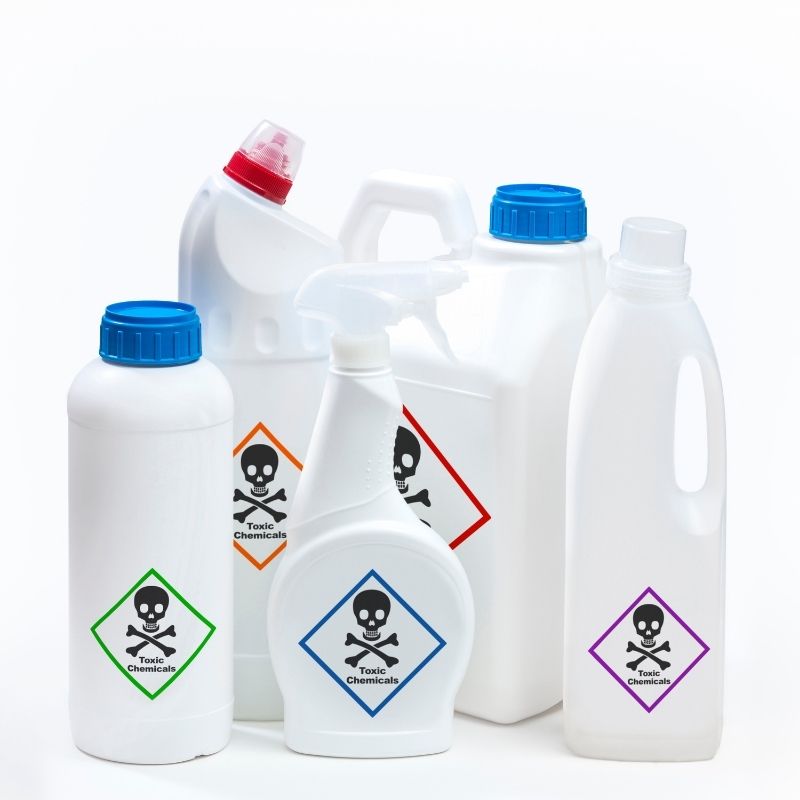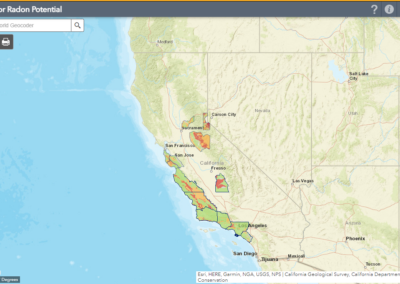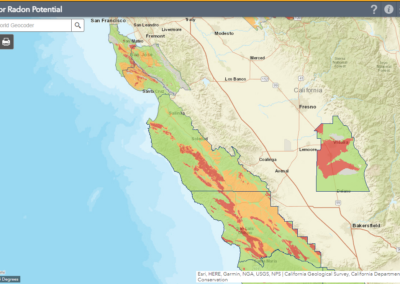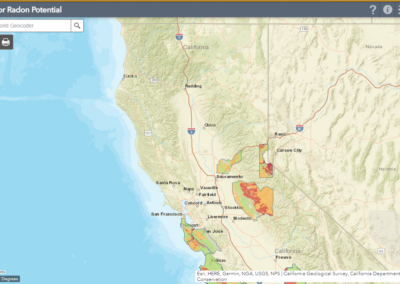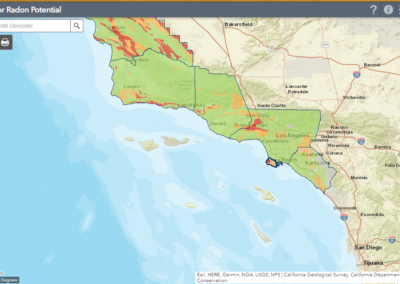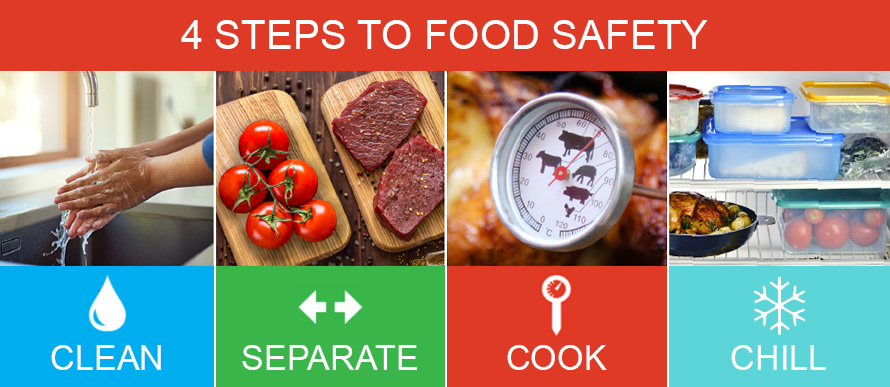Exposures
CNEHJ’s Toxic Exposures Team is working to educate and engage nurses about toxic exposures and human health.
This page provides some very basic information about chemical, radiological, and biological exposures, with special attention to exposures in California. Specific air, water, and hospital exposures are explored in more detail under their respective “Key Issue” page.
Chemicals
The most profound evidence that our chemical policies are failing is the fact that our bodies are full of potentially toxic chemicals. All of us—including newborn babies—have chemicals circulating in our blood that are associated with neurotoxicity, cancer, and reproductive health risks. Both the federal and state governments monitor the public for the presence of toxic chemicals in our blood, urine, and breastmilk. The federal program is the CDC’s National Biomonitoring Program. The state program, Biomonitoring California, measures blood and urine in over 3,700 Californians for the presence of 140 chemicals that are known to be harmful to humans.
To learn more, watch this Toxic Chemicals in Our Everyday Lives webinar with Dr. Gatherine Dodd.
Contaminants may find their way into human milk of lactating mothers because mothers are themselves exposed. Lipid-soluble chemical compounds (e.g., dioxin) accumulate in body fat and may be transferred to breast-fed infants in the lipid portion of human milk. Water soluble chemicals (e.g., salts of metals) also may partition into the aqueous phase and be excreted via human milk.
https://www.epa.gov/expobox/exposure-assessment-tools-media-food
Myth Busting
Many believe that when you purchase an item at a store that somehow the government has been involved in determining that the product is safe, otherwise they would not allow it to be sold. Wrong. With the exception of pharmaceuticals, the government in the US does not really know whether the products on the shelves of our stores are safe or not because 1) manufacturers are not required to do premarket testing and tell the government, 2) the government does not do its own independent testing, and 3) manufacturers do not have to disclose all the ingredients in their products on their labels or otherwise.
Of the estimated 85,000 chemicals that are used in industry and comprise the myriad products that we use in our everyday lives, almost none of them have ever been fully tested for toxicity, including carcinogenicity.
Tools for Finding Toxic Chemicals in Our Food and Products
In addition to contaminants in our air and water, we are also exposed to potentially harmful chemicals in our food and everyday products. There are a couple of easy ways for you to see what kinds of toxic chemicals may be found in your personal care products and foods.
Personal Care Products:
Think Dirty is an app for smart phones that allows you to scan personal care products while you are shopping to determine relative safety from toxic ingredients.
EWG SkinDeep is a web-based tool to look up ingredients and associated health risks in your personal care products. EWG = Environmental Working Group.
Here’s the CAVEAT: These tools assume that product manufacturers are transparent about their ingredients.
Food
What’s on my Food is a tool to find out what kinds of pesticide residues are on a wide range of common fruits, vegetables, nuts, and other foods. It is based on the US Department of Agriculture’s measurements of pesticide residues on food products. In addition to human health risks, you can also find out whether the pesticides are harmful to pollinators, like bees.
Consumer Products
The Consumer Product Information Database contains chemical information on a wide array of products beyond personal care and cleaning products to include automotive, home and garden, pet care, and arts & crafts.
Clearya
The newest tool is Clearya, a new app that can help you determine whether the ingredients in products purchased on-line from Amazon, Target, Walmart, or Sephora may be harmful. This helpful Clearya tutorial video will introduce you to the Clearya app. In addition to carcinogens, Clearya will identify the following risks in products:
- Developmental toxicants that may harm children’s development
- Hormone disrupting chemicals
- Allergens
- Reproductive toxicants that may cause infertility or birth defects
In 2021, Clearya partnered with the California Department of Toxic Substances Control to better identify toxic chemicals in personal care products and other products used by millions of Californians every day.
How Toxic Chemicals Get Into Our Bodies

In addition to direct exposures, the embryo, fetus, and nursing baby can be exposed via the mother.
Special Vulnerabilities in Children
The embryo and fetus are the most vulnerable to toxic chemical exposures. The exquisite orchestration of cell division and cellular differentiation can be thrown off course or interrupted by the presence of toxic chemicals. Chemicals that can cause birth defects include:
Lead ∙ Mercury ∙ Arsenic ∙ Poly Chlorinated Biphenols (PCBs) ∙ Chlorine ∙ Methyl Ethyl Ketone (MEK) ∙ Cadmium ∙ Pesticides
There are also chemicals that can affect birth weight and cause premature births, both of which can create health risks for the baby.
Children can have higher exposures because they:
- Eat more per body weight than adults, so they will consume more pesticide residues, food contaminants, and non-food ingredients, such as preservatives.
- Drink more per body weight than adults, such that they will have more exposure to contaminants in their water or beverages.
- Breathe more per body weight than adults, which will expose them to higher levels of air pollutants.
- Explore the world with “hand-to-mouth” behaviors, which increases their risk for ingesting contaminants.
- Play on and close to the ground where dust, soot, and their associated contaminants are concentrated.
Carcinogens in our Everyday Lives
Years ago, it took an act of Congress to mandate that food companies could not intentionally include known cancer-causing chemicals in their products. While it may sound simply absurd that such a law was required, it did not go far enough. In order to really prevent us from being exposed to carcinogenic ingredients, Congress would have needed to tell the other industries like those who manufacture cleaning products, art supplies, pet supplies, garden products, and many more that they could not intentionally put carcinogenic chemicals into their products. But Congress did not do this and so, we are awash in products that contain known carcinogens, as well as chemicals that are toxic to the neurological and immune systems, cause infertility, and increase risks for birth defects. And given that Congress did not tell food companies that they could not use food ingredients from plants that were sprayed with cancer-causing pesticides, even our foods can include carcinogens in the form of pesticide residues.
Childhood Cancer
Every month, an estimated 1,380 children are diagnosed with cancer in the US.
Childhood cancer is the number one cause of death by disease in children in the US. Between 1975 and 2018, childhood cancer has increased by 41%. But, as the Executive Director of the American Public Health Association, Georges Benjamin, says, “Cancer is not inevitable,” and as a recent report entitled Cancer Prevention: Cross-sector Strategies to Prevent Cancer notes, there are a number of practical and policy steps we can take to prevent environment-related cancers.
We cannot simply shop our way out of this carcinogenic mess
– Barbara Sattler, RN, DrPH, FAAN
Not everyone has the luxury, wherewithal or economic ability to shop their way to safer and healthier products and they should not be punished by a diagnosis of cancer for lacking these privileges.
So, we must advocate, and TAKE ACTION:
- Ban the use of carcinogens in our everyday products
- Demand pre-market testing of all products in commerce
- Demand full disclosure of all ingredients in products and remove vague language to protect “trade secrets”
- Require labeling of all ingredients in products
- Create an accelerated process for banning chemicals/products when they are discovered to be harmful

Pesticides are an important class of chemicals and you can find more information under our Key Issue page for FARMWORKERS.
Radiological Exposures
Radiologic exposures range from the ultra-violet (UV) radiation from the sun, to X-ray radiation in nurses’ workplaces, to the ubiquitous radiological exposures that we now have from our cellular technologies and the “internet of everything.”
Cellular and Wireless Radiation
While nurses are familiar with UV and X-Rays, many are not as familiar with the evidence about potential health risks associated with radiofrequency radiation (RFR) from cell phones and Wi-Fi.
Health science on this topic has been emerging for many years but has not really been widely represented in the popular media. There is evidence in both human and animal models of a wide range of effects:
-
- Increased cellular stress
- Genetic damages
- Structural and functional changes of the reproductive system
- Learning and memory deficits
- Neurological disorders
In 2011, the International Agency for Research on Carcinogens categorized exposure to radiofrequency technologies as a possible carcinogen. Evidence also shows that children’s brains are particularly vulnerable to RFR exposures from cell phones. Men who keep their cell phones in their pockets have shown increased risk of lower sperm count and slower sperm motility. As of Jan. 2021, over 250 international scientists signed an “appeal” recommending the following for “Protection from Non-ionizing Electromagnetic Field Exposure”:
1. Children and pregnant women be protected;
2. Guidelines and regulatory standards be strengthened;
3. Manufacturers be encouraged to develop safer technology;
4. Utilities responsible for the generation, transmission, distribution, and monitoring of electricity maintain adequate power quality and ensure proper electrical wiring to minimize harmful ground current;
5. The public be fully informed about the potential health risks from electromagnetic energy and taught harm reduction strategies;
6. Medical professionals be educated about the biological effects of electromagnetic energy and be provided training on treatment of patients with electromagnetic sensitivity;
7. Governments fund training and research on electromagnetic fields and health that is independent of industry and mandate industry cooperation with researchers;
8. Media disclose experts’ financial relationships with industry when citing their opinions regarding health and safety aspects of EMF-emitting technologies; and
9. Safe zones (radiation-free areas) must be established.
There are some simple ways to reduce exposures including shutting cell phones off or keeping them in airplane mode when not in use. Hard-wiring devices, including computers, versus relying on wifi will also decrease exposures. We are now in the 5th Generation (5G) of cellular technologies and 5G technologies are everywhere. Nurses can support continued research on the health risks that may be associated with RFR and keep up on the research and evidence to guide our practices and patients’ anticipatory guidance.
The BabySafe Project recommends the following for pregnant women to decrease their exposure:
1. Keep your cell phone away from your body. Never carry it in a pocket or bra. Don’t sleep with your phone. Switch your phone to airplane mode whenever you are not using it.
2. Keep your wireless laptop or tablet away from your body. Never rest your wireless device on your tummy.
3. Get a corded landline if at all possible. You can talk on it safely for hours and it’s safer than using your cell phone or cordless phone.
4. Don’t sit anywhere close to your router or smart meter. Turn off routers at night.
5. Whenever possible, connect to the internet using wired (Ethernet) cables.
Radon
Radon is a naturally-occurring radioactive element. It can be present in the soil and its radiation can permeate basements and lower floors in homes. High level home exposure to radon is significantly associated with lung cancer. In CA, there are particular areas where the risk of radon is very high and high – see the maps below. If you live in these areas, it is recommended to test for radon in your home and, if the levels are high, to take steps to remediate the exposures.
These maps are provided by the California Geologic Survey and shows both levels of radon in red, yellow, and orange. It also indicates the percent of households that have high levels of radon.
Biological Exposures
There are a great many ways that humans experience biological exposures – water, soil, air and foodborne pathogens. We have a heightened awareness of our hospital exposures.
Foodborne Exposures
Each year, foodborne illnesses affect 48 million Americans (approximately 17% of the population), cause 128,000 hospitalizations, and 3,000 deaths. Foodborne illnesses are caused by eating food contaminated with harmful bacteria or pathogens such as norovirus, salmonella, campylobacter, E. coli, listeria, or hepatitis A. Between 1998 and 2014, California had to combat 2,305 foodborne illness outbreaks. These resulted in a total of 52,440 illnesses, 3,215 hospitalizations, and 108 deaths. However, foodborne illnesses are significantly underreported.
Simple recommendations from the California Department of Public Health can decrease risk of foodborne illnesses for you and your family:
Prevent foodborne illness by safely handling and cooking food before you eat or serve it. Learn the four steps of food safety:
Clean: Wash your hands and the surfaces where you prepare food with soap and water.
Separate: Don’t mix raw meat and ready-to-eat foods.
Cook: Heat food to the right temperature to kill any germs that can make you sick.
Chill: Refrigerate food right away to prevent germs from growing in your food.
Waterborne Exposures
While explored further in our Water Key Issue page, the most common waterborne outbreaks associated with pathogens in public water systems. The links to CDC-information regarding each pathogen can be found below.
Soil-Born Diseases
Soil ecosystems contain and support the greatest amount of biodiversity on the planet. A majority of this diversity is made up of microorganisms, most of which are beneficial for humans. Tetanus, anthrax, and botulism can all be transmitted through the soil.

For more information go to the California Department of Public Health’s information on Valley Fever.

This map shows rates of Valley Fever per 100,000 population in California:
Valley Fever
In CA, particularly in the Central Valley, Coccidioides is a fungus of concern. Its spores are found in the soil and when they become airborne, from tilling or other disruption of the soil, they can infect humans and cause Coccidioidomycosis, commonly known as Valley Fever. The geographic range in California where coccidioides is found is expanding and, according to the California Department of Public Health, on the rise. The initial symptoms of the disease are similar to the flu and COVID, and therefore can easily be misdiagnosed. The symptoms can last for several weeks to several months and the disease can become an intermittent chronic disease.
The California Department of Public Health has developed a brochure about Valley Fever.


